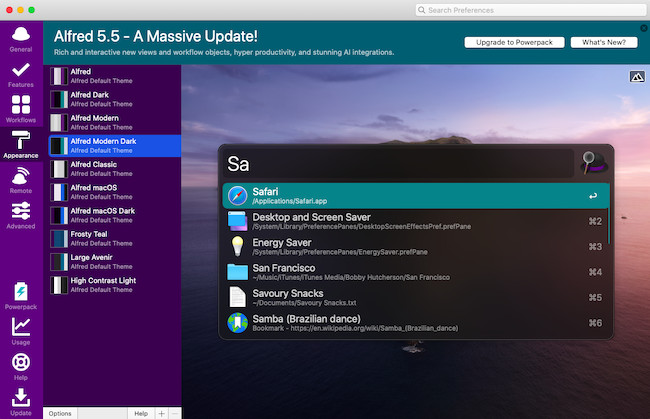It’s very hard to write a list of productivity apps that everyone will find useful but here I’m sharing the free versions of apps that I find the most useful.
In this roundup, I’ve chosen a mixture of multi-purpose all-in-one productivity apps and tools that are focused on a specific need such as managing appointments or productivity in macOS.
All these apps either work natively on Mac desktops (including Apple Silicon Macs) or can be used in the Cloud.
If you’re on a budget, they also all offer a limited free version although for professional use, you’ll need to upgrade.
1. Fantastical
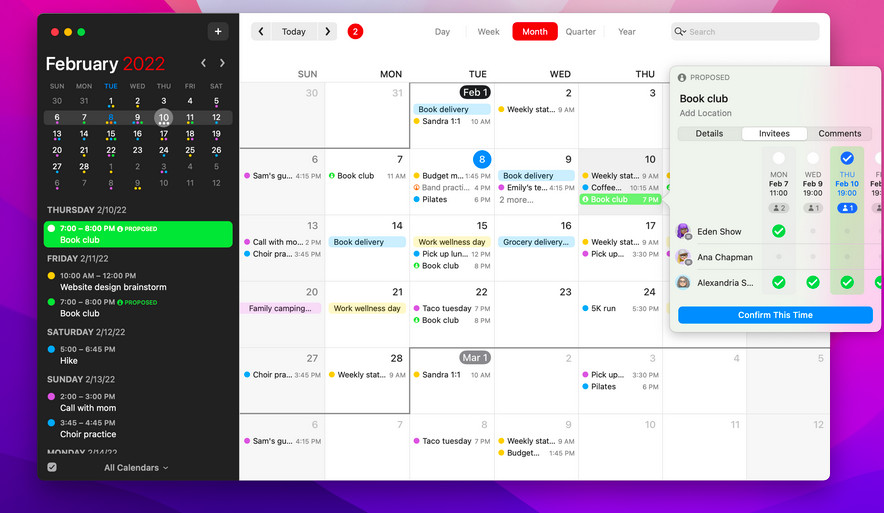
Fantastical is one of the most popular calendar apps for Macs out there and it’s easy to see why.
Fantastical is about as Apple crazy as they come with a native macOS app, an iOS app and integration with Apple’s Vision Pro.
Not only does it have a very slick interface which is very simple to navigate, it also works like clockwork.
Fantastical allows you to organize your calendar in days, weeks, months and years and you can add different colors to events to give a clearer outlook to your week.
You can also easily create automation’s making Fantastical repeat a certain events over a specific time period.
Fantastical also has an excellent “To Do” list function which allows you to add tasks alongside calendar events and then easily complete them once done.
Tasks will notify you when they are overdue and carry over to the next day until they are done.
Another feature I particularly like is the calendar sets and focus filter.
This allows you to choose to see only work related tasks and events while at work and then switch to personal tasks and events when you are out of the office.
Fantastical is also well integrated with many other popular apps such as iCloud, Microsoft 365, Outlook.com, Google Calendars and more.
Pricing: Free Trial / Plans starting from $4.75/month.
2. Monday.com
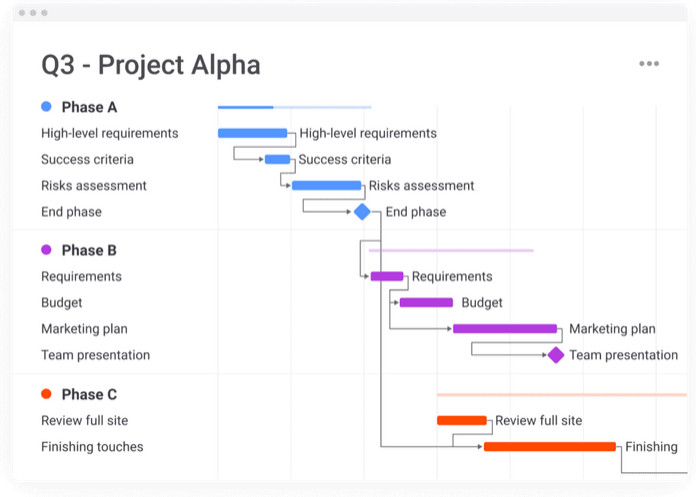
Monday.com is a proper Jack of all trades that does everything from Roadmapping, CRM management to Project Management so it’s all about productivity.
Monday.com is excellent for creating workflows as you can create Gantt charts and Kanban boards to easy visualize and organize tasks.
You can also create dashboards with over 30 different widgets to display information helping you make better and faster decisions.
Monday.com is also big on automation to help repeat tedious jobs you normally have to do manually.
You can setup trigger responses to any action such as “Notify team members every time a task is finished” or simply use any of the automation templates.
Monday.com is also very well integrated with software such as Microsoft Teams, Gmail, Slack, and email marketing tools like Mailchimp.
You can read our full Monday.com review to learn more.
10 Hidden Features in Monday.com Mac users should be using
Pricing: Free / Paid plans starts from $9/seat/month.
3. Alfred
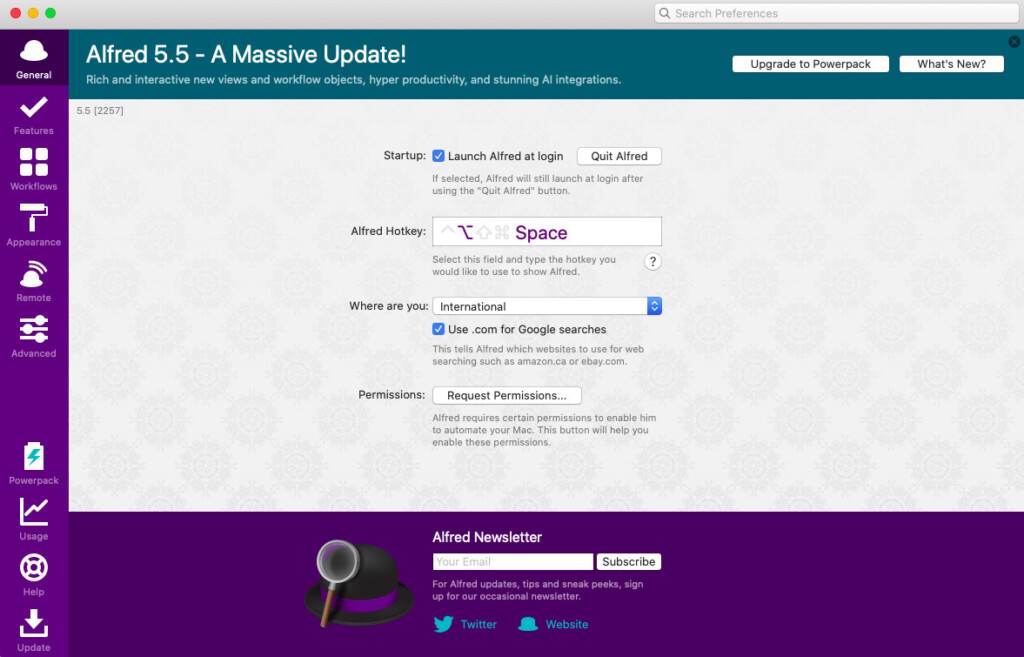
Alfred App is a productivity software for macOS that has been around since 2010 and has a bit of a cult following with Mac and iOS users.
Alfred aims to optimize and simplify the way you use macOS.
The search and browse function is a clever feature where Alfred learns how you use your Mac and prioritizes search results based on your history.
It also allows you to be far more productive by allowing you to configure hotkeys and keywords to trigger functions on your Mac.
The Clipboard history and Snippets feature simplifies your work by using the clipboard to locate texts, files or images that you’ve previously copied and paste them in again extending the functionality of the macOS default clipboard tool.
If you upgrade to the Powerpack version, you get more features such as Workflow charts to link hotkeys.
Alfred is also very well integrated with iOS, which allows you to control macOS with your iPhone or iPad.
Because Alfred is a UK based company, it only lists pricing in Pound Sterling but your bank will automatically convert the price to your local currency upon purchase.
Pricing: Limited Free Version / $43 (£34)
4. Harvest
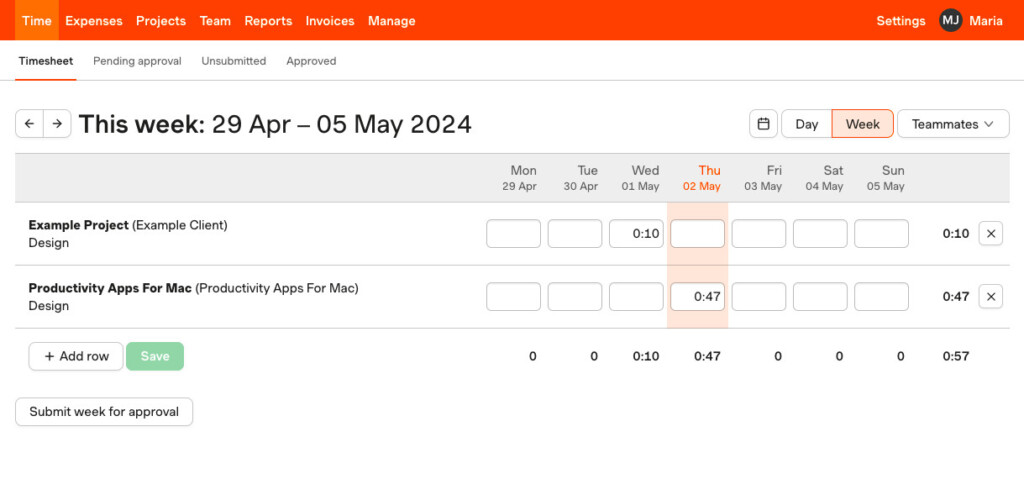
If you need to track your time spent on projects for clients and invoicing, then Harvest App is a simple but effective time tracking app.
Harvest App makes it simple to create and view reports, invoicing and payments.
To get started, just setup the number of team members, tasks and deadlines you need to track.
When done, you can generate an invoice based on the time you’ve spent working on the project.
There’s also a really useful cost tracking feature to make sure you and your team stays within budget.
Harvest is also very well integrated with other apps, such as Trello, Xero, Quickbooks, Google Workspace and many many more.
Pricing: Free / Paid version starts from $11/seat/month.
5. Miro

Miro is used by some of the biggest enterprises out there including Cisco, Hewlett Packard and Dell which gives you an idea of how trusted it is when it comes to brainstorming and planning.
Miro is mainly a Whiteboard software and its strength lies in mind mapping and brainstorming in a team.
Miro is commonly used by teams working remotely to brainstorm, plan projects, map out information architecture, create org-charts and develop sales strategies.
Miro features integrated video chat is and @mentions that help large teams collaborate effectively and stick to deadlines.
It also allows managers to assign tasks although if you use Jira, there’s a plugin for this too in the Miro Marketplace.
You can easily see which changes have been made by who so you can always maintain accountability on whiteboards and joint projects.
Miro is very well integrated with many other popular tools on the market such as Google Workspace, Slack, Microsoft Teams, Zoom and 130 more apps.
You can read more in our full review of Miro.
Pricing: Free / Paid plans starting from $8/member/month.
6. Trello
If you are familiar with Kanban then you will ease into Trello immediately.
Trello is one of the most popular productivity tools out there and works by a simple system of moving tasks between lists and boards.
It gives you a very clear overview of tasks, team members and deadlines, all in a very simple interface.
Trello allows users to add comments, assign tasks and easily share information with the entire team or a specific member of the team.
The calendar view helps you convert projects into a more manageable size by seeing what needs to be done today without being overwhelmed by the project as a whole.
Other calendars can easily be integrated into the Trello calendar as well, such as Google, Outlook and Apple.
There’s also an automation feature “Butler” that makes it easy to set automated triggers and Butler will take it from there.
This will save you lots of time allowing to fully focus on the bigger, more important tasks.
Pricing: Free / Paid plans starting from $5/member/month.
7. Calendly
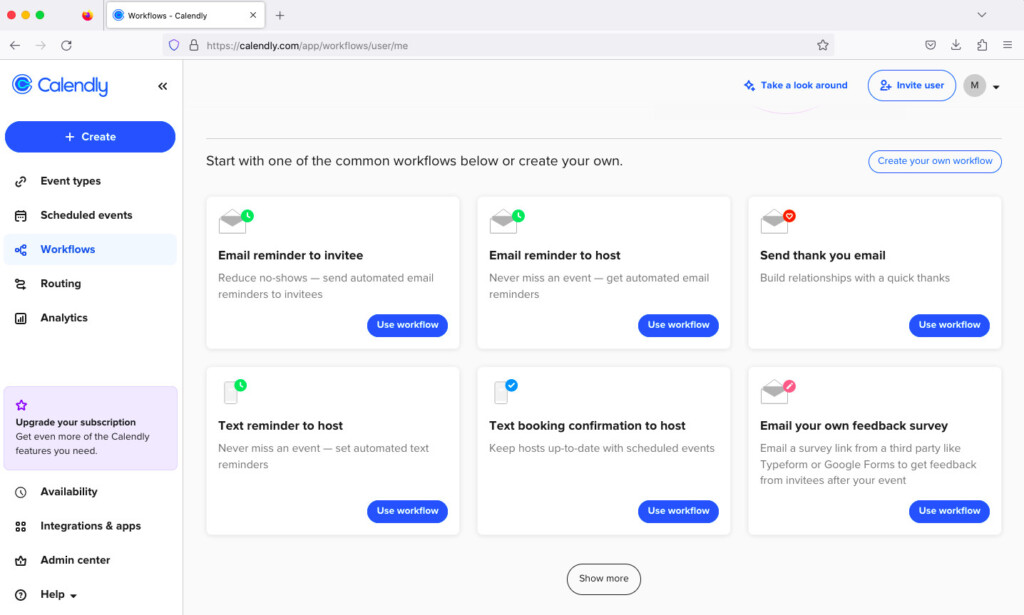
If you are in and out of meetings all week, Calendly is the perfect app to simplify the entire process of scheduling, rescheduling or cancelling a meeting.
Calendly allows you to send links to potential clients or leads that allows them to automatically check your availability.
It will also then automatically send out reminders and follow ups. If a clients changes the date of a meeting, it will dynamically update in your calendar.
Calendly supports many different kind of meetings such as one-on-ones, webinars and workshops.
It’s also fully integrated with Office 365, Google products and Outlook.
Note that email support is only available to Premium users and you can only connect one calendar per account so if you have multiple calendars, Calendly is not for you.
Pricing: Free / Paid plans starting from $10/month.


